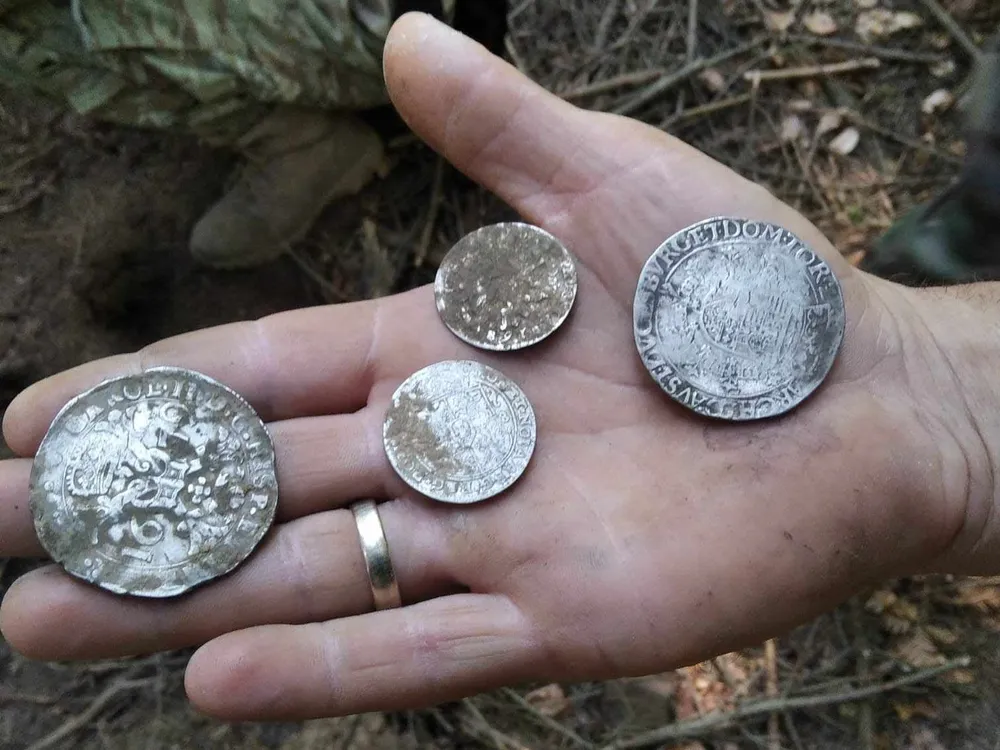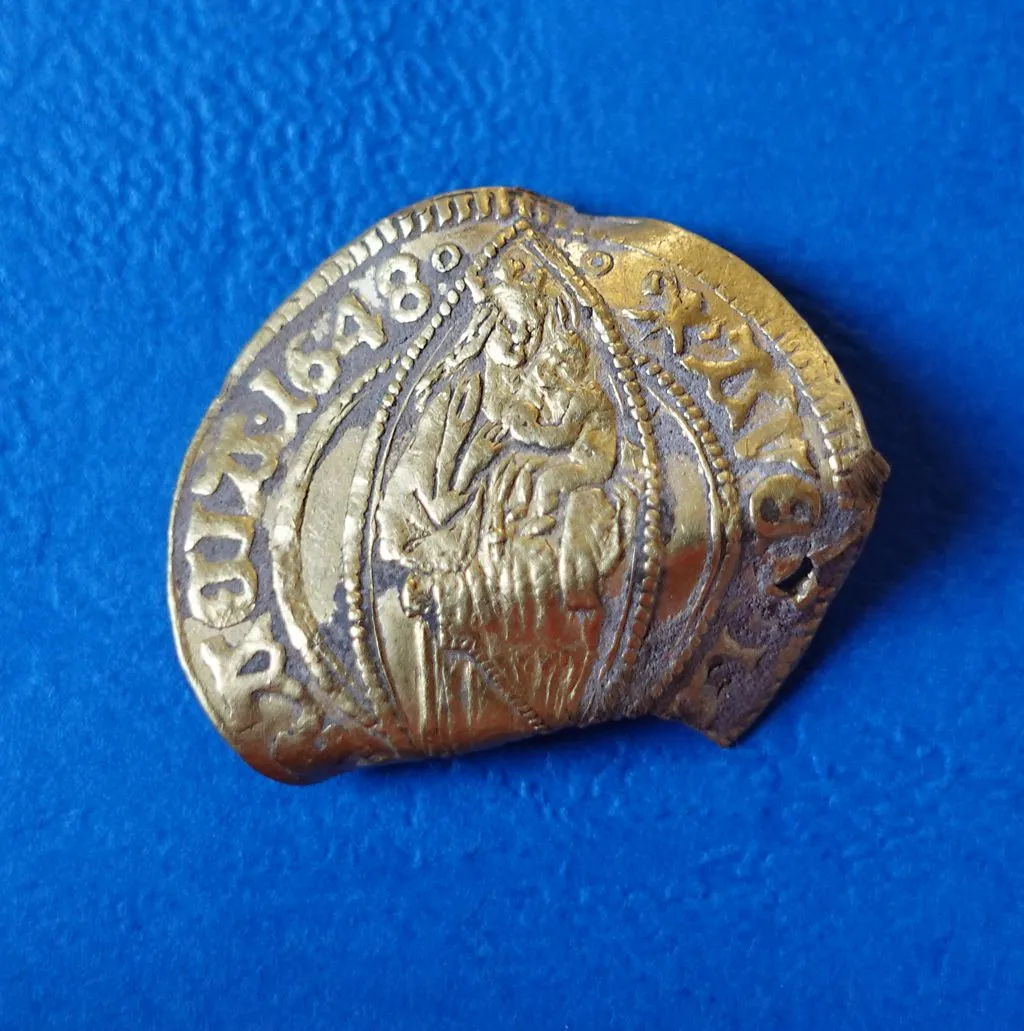Do These Coins Belong to a Legendary 18th-Century Polish Fraudster?
Mountain hermit Antoni Jaczewicz tricked sick people into thinking he had healing powers. A Polish treasure-hunting group believes they’ve found his fortune

A Polish group searching for lost treasure has discovered a collection of coins that may have belonged to a notorious early 18th-century con artist.
Legend has it that the fraudster, Antoni Jaczewicz, built a hermitage in the mountains, where he would trick people into thinking he had religious healing powers for money.
The Swietokrzyska Exploration Group originally found the coins using metal detectors in south-central Poland's Jeleniowskie mountain range in 2022, according to a Facebook post from the Provincial Office for the Protection of Monuments in Kielce.
According to a statement, the group waited almost two years to announce the findings, and can now confirm the true story of the legend.
Jaczewicz built his hermitage in May of 1708. During this time, Poland was in the midst of the Great Northern War, and the country was dealing with a plague outbreak.
Jaczewicz used this hardship to his advantage. According to the Facebook post, the fraudster claimed that the Virgin Mary was living with him in the mountains and that she gifted him with special powers that could heal the sick.
He convinced those suffering to come to the hermitage and promised that he could ward off illness. Even those who were healthy came to him thinking he could prevent sickness. Many would travel to the hermit hoping that he could help save them and they paid him in gold and silver.
His business was so in demand that he eventually hired guards to protect his hermitage. He even sent these guards to rob his surrounding neighbors.

Eventually, authorities caught wind of his scheme. They arrested him twice. The first time, he managed to escape. During the second arrest, he was not so lucky and served a life sentence.
The Swietokrzyska Exploration Group found multiple coins in the mountain range, including a 1648 Hamburg gold ducat featuring the Madonna and child. The ducat is the cherry on top of the discoveries so far, per the group's statement.
The artifact had a small hole through it, which the group believes means someone wore it as a medallion.
The team has handed over the coins to the Historical and Archaeological Museum in Ostrowiec Swietokrzyski. They have not disclosed the number of coins found so far and research is ongoing.
According to the Facebook post, experts are planning to further analyze the coins to gain clearer insight into their history. For now, however, their discovery is lending credibility to this historic tale.
“Antoni was considered a fictitious person/myth/legend," exploration group president Sebastian Grabowiec tells Live Science’s Jennifer Nalewicki in an email. "By finding his treasure, we confirmed that such a person really existed."

